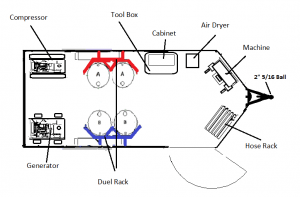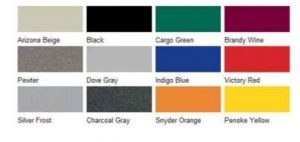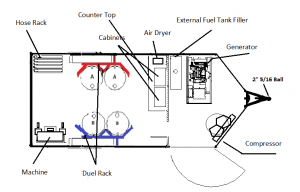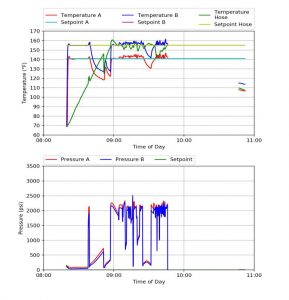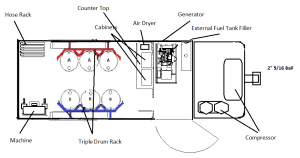How spray foam insulation prevents energy loss
There are many factors which determine how much energy a modern building is required to operate efficiently. In this article, we explore where energy loss is happening. We also explore how to prevent energy loss with spray foam by using foam insulation spray equipment.
What impacts a building’s energy consumption?
- Size and shape are the top two factors impacting energy consumption, however the color of the exterior including roofs and walls, and the materials used to construct the building heavily impact energy consumption as well. Studies show that lighter color buildings absorb less heat. Energy Star recommends insulation and roof coating to reduce energy consumption.
- The building’s angle to direction and geographical location are also factors.
- The ratio of windows to wall area is another consideration, including the type of glass and the construction of the windows themselves. Many window manufacturers offer this data.
How buildings are used impacts energy consumption.

The use of the building will also influence the energy consumption. For example, a cold storage warehouse, agricultural facility, school, and an office building all have different energy requirements, even when the buildings are constructed in the same fashion, size and general location. The energy usage is affected by the buildings age, the amount of occupants, the time of day and hours per day of usage and their overall usage. Lighting requirements, equipment types utilized, too, are considered factors as well.
Other factors impacting energy consumption.
Other significant factors are the type and efficiency of heating, ventilation and air conditioning systems.
Offsetting costs often involve the use of renewable energy sources such as solar or in some cases incentives for off peak energy usage. These are among the most vital considerations for factoring the building’s energy consumption. However, the single most important contributor to wasted energy is often the flow of energy escaping through walls, roofs, pipes, ducts and gaps within the building envelope.
How to prevent energy loss.
Thermal insulation, specifically spray on polyurethane foam better known simply as spray foam, with its ultra-low conductivity, highest r-value per inch to competing insulations, and its seamless natural ability to seal off gaps and voids spray foam is the perfect choice to maximize on the buildings energy efficiency. Whether it be retrofit or built into the construction of the building, spray foam insulation can substantially restrict the wasted energy and economize on the building’s consumption and construction.
Spray foam insulation provides several benefits to commercial buildings.
- Continuous Insulation: Due to spray foam’s chemical reaction, it expands and covers the full sprayed-on surface area without leaving voids that typically happen with inferior materials.
- Air Sealing Barrier: Preventing air from transferring into the building creates a big opportunity for energy savings. Air leaks are guaranteed to not only cause the HVAC system to work harder, but also is a gateway for water intrusion.
- Heat Transfer Resistance: Spray foam insulation provides a higher R-Value than most other types of insulation. The higher the R-Value, the lesser the chance of transferring external weatherization.
Preventing energy loss with your building envelope is a great way to save money on energy costs and long-term building repairs. Learn about the foam insulation spray equipment we offer.



